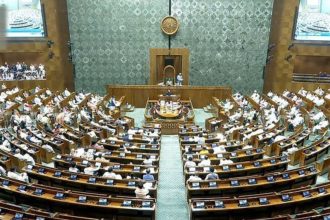
New Delhi: India’s COVID-19 situation is experiencing a renewed uptick, with a gradual rise in infections reported across the country. According to the Ministry of Health and Family Welfare, 391 new cases were confirmed in the 24 hours leading up to 8 June, increasing the active caseload to 5,750. This increase follows a period of relatively low numbers, indicating a potential resurgence of the virus.
Kerala remains the epicentre of this recent surge, recording 127 new infections, significantly higher than other states. Gujarat reported 102 cases, Delhi 73, and Maharashtra 29. Several other states, including Tamil Nadu, West Bengal, Chhattisgarh and Andhra Pradesh, also witnessed increases in daily case numbers. Conversely, four regions – Arunachal Pradesh, Chandigarh, Mizoram, and Tripura – reported zero new cases.
The rising infection rate is accompanied by a concerning increase in fatalities. Four COVID-19-related deaths were recorded, bringing the year’s total to 59. These deaths highlight the continued vulnerability of certain populations. A 45-year-old pregnant woman in Madhya Pradesh, a 63-year-old man with hyperthyroidism in Maharashtra, a 59-year-old man with stage four lung cancer in Kerala, and a 79-year-old diabetic patient in Tamil Nadu all succumbed to the virus, underscoring the increased risk for individuals with pre-existing health conditions.
The cumulative death toll reveals stark regional variations, with Maharashtra reporting the highest number of deaths (18) followed by Kerala (12) and Delhi and Karnataka (7 each).
Despite the rise in cases and deaths, there is positive news regarding recoveries. 5,484 patients have recovered since January, including 760 in the last 24 hours. To mitigate the impact of a potential future surge and ensure the healthcare system is well-equipped, the central government has initiated nationwide hospital mock drills.
These drills focus on evaluating the readiness of critical infrastructure, such as oxygen supplies, ventilator availability, and essential medicine stocks. These proactive measures reflect the government’s commitment to preparedness and underscore the importance of continued public health vigilance.










